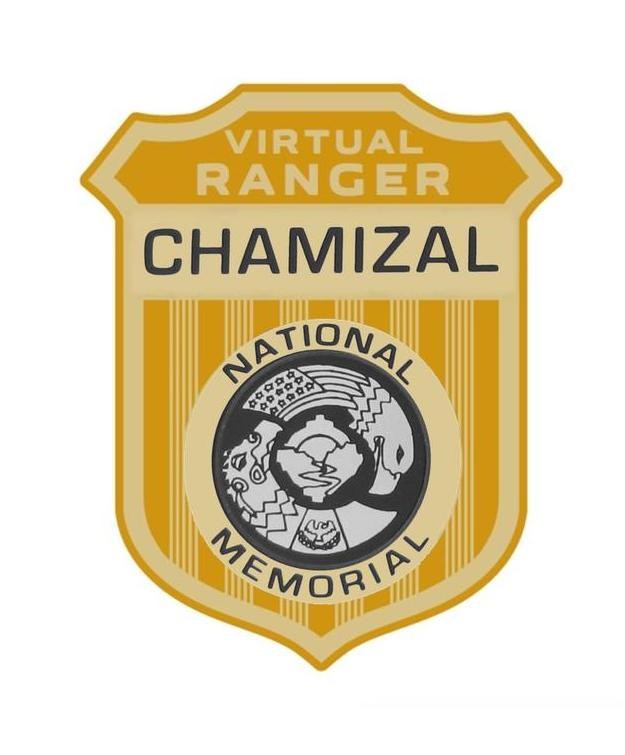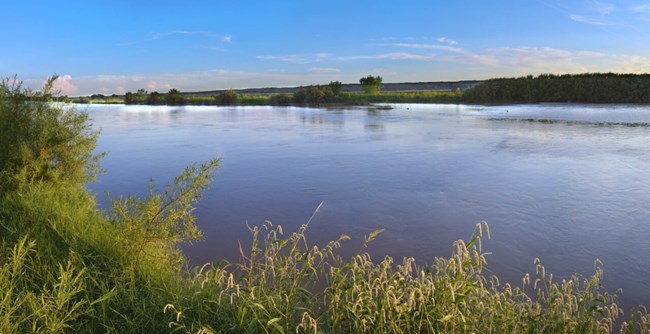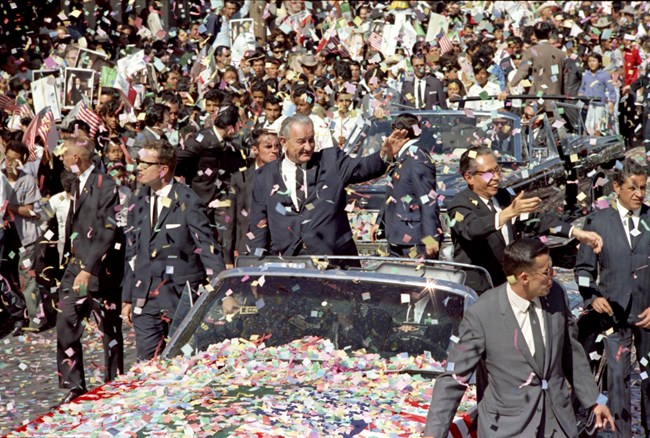Last updated: August 11, 2023
Article
Chamizal Virtual Ranger

Junior Rangers are special people who are dedicated to their national parks. Their mission is to explore, learn, and protect and to have fun while doing it!
While you can earn your Junior Ranger badge on your visit to Chamizal National Memorial, we have also put together an opportunity for you to become a Chamizal National Memorial Virtual Ranger.
Using the pages of our website, you can complete the online activities to earn your Virtual Ranger badge! When you finish, print your badge to add to your collection!
Orientation
National memorials tell stories that are worth remembering. This one reminds us of an important event in our country’s history and helps us learn from it and celebrate it. Where is Chamizal National Memorial? Use our park map to discover where this important history unfolded and find the answers to the following questions.
Directions
- Read the question. Don't click on it yet!
- Look for the answer on the park map.
- Now click (or tap) on the question to reveal the answer.

NPS / RODNEY SAUTER & 106 GROUP / CHRIS EVANS
Background
You may not be able to tell from the park map, but Chamizal National Memorial and the surrounding city are located in a desert: the Chihuahuan Desert.
One reason people have lived in this part of the desert for a very long time is because there is water from a river that starts in Colorado and flows into the Gulf of Mexico. Listen to Javier Loera talk about what this river means to the people of Ysleta del Sur Pueblo. What is the name of the river?
Speaking of names, Chamizal National Memorial’s name comes from the word “chamizo,” which is a...
Chamizal History
The history of Chamizal National Memorial includes conflict and resolution.
War
Read about the US-Mexican War and make a list of the costs of the war to the people and nations involved.
- Two years of time
- 44,000 people wounded or killed
- Mexico lost half of its land to the United States
- Hard feelings between the two countries
Boundary
After the war, the United States and Mexico worked together to map the new boundary between the two countries.
Conflict


Left image
The course of the Rio Grande four years after it became the boundary
Right image
Maps of the river at different times show big changes in its course.
Over time the river channel shifted. Do you think the boundary should move with the river? Who controls the land on either side when the river changes course? If you’re not sure, don’t worry; the United States and Mexico had to find answers to the same questions, and it took them a very long time! Take your time and browse the conflict timeline to find answers to the following questions.
Resolution


Left image
Move the slider to reveal the name of Mexico's president in 1962.
Credit: ROBERT KNUDSEN. WHITE HOUSE PHOTOGRAPHS. JOHN F. KENNEDY PRESIDENTIAL LIBRARY AND MUSEUM, BOSTON
Right image
Move the slider to reveal the name of the US president in 1962.
Credit: ROBERT KNUDSEN. WHITE HOUSE PHOTOGRAPHS. JOHN F. KENNEDY PRESIDENTIAL LIBRARY AND MUSEUM, BOSTON
After such a long time, solving this problem would be difficult. There were strong feelings on both sides. People had built houses and were living on the disputed land. It would take careful diplomacy to keep both governments working together to find a solution. Ambassador Thomas C. Mann represented the United States in discussions. He and a group of men from both countries negotiated by sending possible solutions back and forth for the other side to consider. Both the United States and Mexico had to compromise to find a solution they could both agree on.
A form of the words diplomacy, ambassador, negotiate, and compromise are used in the previous paragraph. Can you match each word to one of the following definitions?
Listen to what Ambassador Thomas C. Mann said about the conditions that the two countries agreed on in order to resolve their dispute over the Chamizal land.
-
Thomas C. Mann
Park ranger Jerome Flood reads an excerpt from an interview with Thomas C. Mann.
Not everyone shared the same feelings about the conditions of the treaty at the time. Read about how some people were affected when the Chamizal treaty was implemented, or carried out, and listen to a couple of the perspectives.
Reflect for a minute on what you might think or feel if you were told you had to move from your home.

LBJ PRESIDENTIAL LIBRARY
Celebration
From the perspective of the US and Mexican governments, the Chamizal treaty was a huge success and cause to celebrate. Today, Chamizal National Memorial exists as a reminder of how nations can peacefully solve their problems when they commit to diplomacy and treat each other respectfully.
A Living Memorial
Today we continue to promote the respect and goodwill between the United States and Mexico that allowed a long disagreement to finally be resolved. As a sign of friendship, we fly the flags of both countries on the grounds of Chamizal National Memorial.
Can you identify which flag belongs to which country?


Left image
Slide left to see which country's flag is red, white, and blue with stars and stripes.
Right image
Slide right to see which country's flag is green, white, and red with an eagle and a snake.
As a national memorial, we keep our nation’s important histories alive to recall problems that our country should avoid and keep in mind how to peacefully resolve them. We are one of the many national parks that preserve the heritage of the United States. The arrowhead logo can be seen at all national parks and shows the resources that park rangers protect.
Can you match the letter for each clue to the number on the part of the arrowhead logo that it describes?
- Click on each letter to read the clue.
- Decide which numbered part of the arrowhead logo the clue is talking about.
- After matching all of the lettered clues to the numbered parts of the arrowhead, move the slider to the left to reveal the correct answers.


Left image
Match clues A through E to parts 1 through 5 on the arrowhead.
Right image
Move the slider to reveal the correct matches.

Congratulations!
Now that you have completed all of the activities to become a Chamizal National Memorial Virtual Ranger, all you need to do is say your oath out loud and print your badge.
Virtual Ranger Oath
I promise to do my duty as a Virtual Ranger by telling others what I have learned today. I will share this activity so others can become Virtual Rangers as well. I will remember to find peaceful ways to end disagreements I might have with other people. I will practice diplomacy with others and treat them with respect.
A few ideas for displaying your badge:
- Print your badge, use it as a template to cut a piece of cardboard matching the shape, and then glue the paper and a pin onto the cardboard!
- Use tape to secure it into your passport or scrapbook!
- Set it as your background on a phone or tablet!
Add Your Voice
We want to hear from you! What interesting thing did you learn? What activity did you enjoy the most or the least? Send us a message and tell us what you think.
